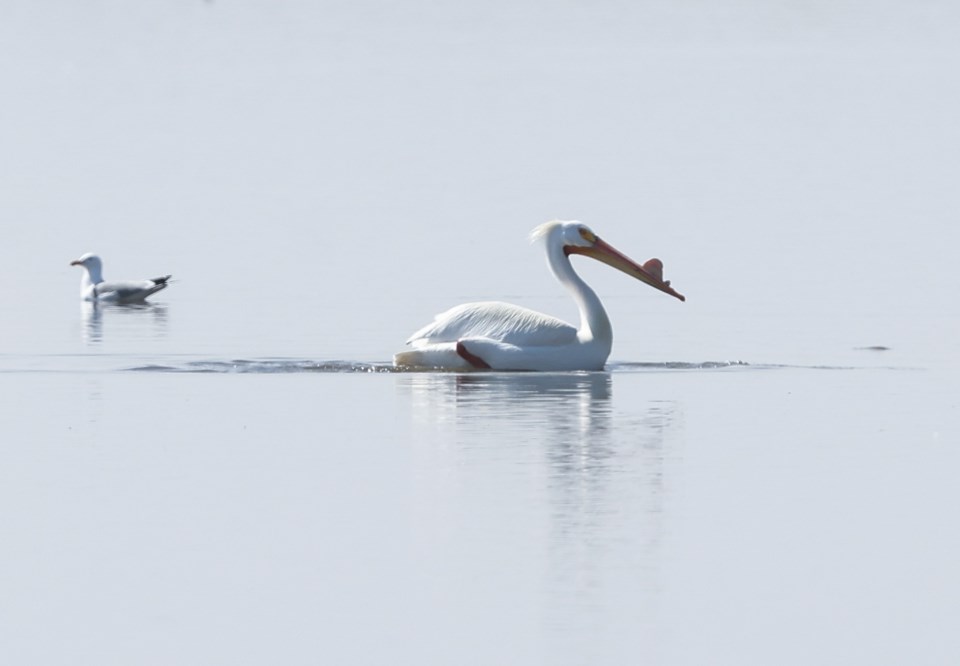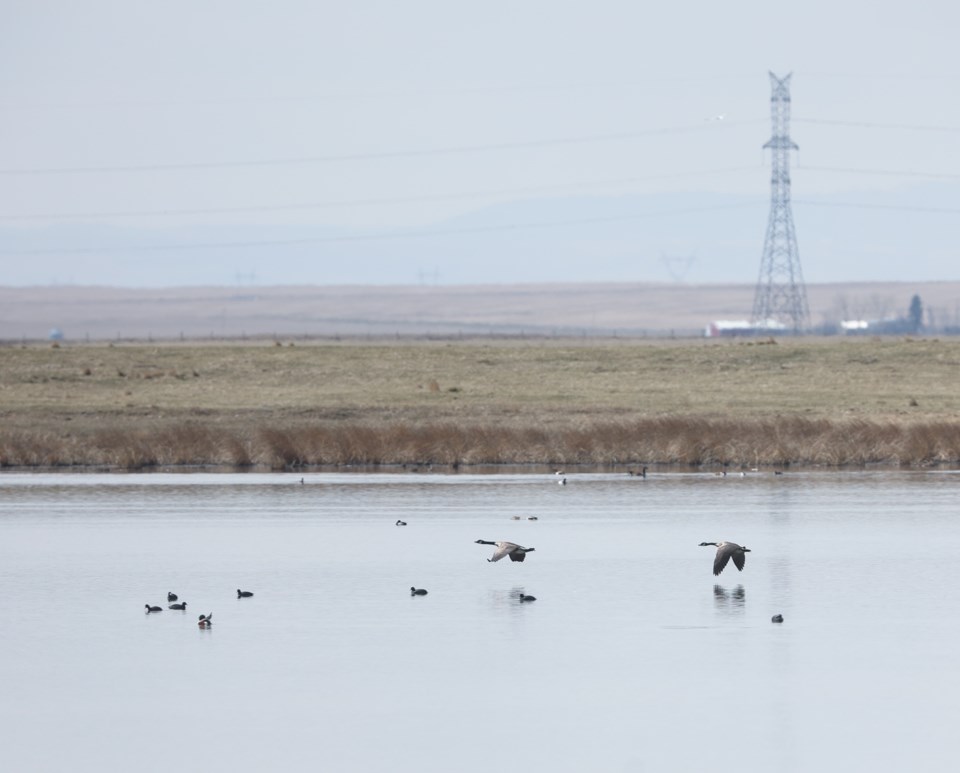FOOTHILLS COUNTY — Volunteers at a prolific pit stop for migratory birds are concerned over the avian flu.
Having witnessed several bird deaths, 40-year biologist and Frank Lake volunteer caretaker Greg Wagner suspected the highly pathogenic avian influenza (HPAI) is taking hold at Frank Lake, situated just east of High River.
The current HPAI strain, classified as H5N1, has led to reported outbreaks in poultry and other domestic farming operations across the province and much of Canada, but is also known to infect and spread through wild bird populations.
“It’s the same concern that everybody’s got in the province,” said Wagner, adding he has been spotting dead birds everyday. “What’s going on here is being observed at almost every large wetland in Southern Alberta, probably Western Canada.
“We just hope this doesn’t get out of hand; we’ve about 10 or 12 carcasses here, which is not a major impact on the bird populations, but if it does get out of hand, of course that would be concerning.”
Mostly restricted to waterfowl like ducks and geese, Wagner said they had found pelicans they suspected of succumbing to HPAI.
“We’re finding it here in the pelicans, sort of something new that’s been reported elsewhere, but hasn’t be reported that often,” he said.
“You will see dead birds from migration every year, but not like this, not as widespread as we’re seeing.”
Fellow volunteer and bird photographer Mark Garbutt handed three such deceased pelicans to a Fish and Wildlife officer but had not heard back regarding testing.

Ducks Unlimited began establishing Frank Lake in 1952, with further work from 1975 and onward to stabilize the lake.
Covering roughly 1,010 hectares, with another 808 hectares of land as back-flood, the lake was designated as an Important Bird and Biodiversity Area by BirdLife International in the 1990s.
Wagner estimates over 50 species of migratory birds make a stop or nest there.
Considering that, Garbutt and Wagner are hoping the Government of Alberta continues to monitor the HPAI situation in wild birds.
“It’s not a pleasant thing, and we’re certainly making sure the government biologists are on top of it and Mark and I really try to make sure we’re letting people know what’s going on,” Wagner said.
To that end the two have been in touch with Alberta Environment and Parks and the University of Calgary School of Veterinary Medicine, bringing them specimens of concern.
Dr. Dayna Goldsmith, a veterinary pathologist with the University of Calgary, received and tested three birds brought in by Garbutt, a Canada goose, an American avocet, and a black-necked stilt.
“The Canada Goose was really scavenged so there wasn’t a lot of tissues left in terms of making a diagnosis based on the autopsy,” Goldsmith said. “It did have a trachea, which his one of the things we swab to test for influenza.”
Given the damage to or lack of tissue in the specimen, the pathologist was unable to say until a swab comes back, but she said it was likely given the numbers.
“Right now because of the number of cases we’re seeing of influenza, pretty much the majority of geese that are dying right now are positive, so that one very much could be,” Goldsmith said.
The other two birds, she added, likely died of other causes, with the avocet having suffered trauma and an infection of the lungs, and the black-necked stilt showing evidence of pneumonia.
“They could still be positive for the virus; the one with trauma I think is pretty unlikely, the other one is a little bit more uncertain,” Goldsmith said.
“We haven’t been seeing as many shorebirds being affected, they definitely can be, but the hardest hit right now are the Canada geese, the snow geese, and then some of our raptors.
“We’re actually seeing cases in great horned owls, and then some of the other raptors like red tail hawks.”
A statement from Jason Penner, a spokesperson for Alberta Environment and Parks, acknowledged the occurrence of avian influenza in wild birds, particularly waterfowl, and this has included some cases of HPAI.
“Alberta Environment and Parks is working in conjunction with Alberta Agriculture, Forestry and Rural Economic Development and the University of Calgary to document the ongoing outbreak of HPAI in wild birds and inform programs aimed at limiting outbreaks in domestic poultry,” Penner said in the statement.
“Most of the mortality due to avian flu in Alberta was in snow geese, estimated at one per cent mortality in snow geese migrating through Alberta since early April. Most, but not all, migrant geese have now moved out of southern and central Alberta. There was limited spillover into other wild bird species, particularly owls, hawks, crows and magpies.”
For more information about how the public should approach potential cases of H5N1 avian influenza, Goldsmith recommended visiting the Government of Alberta web page for HPAI in wildbirds at https://www.alberta.ca/avian-influenza-in-wild-birds.aspx
The page states that in most cases, the government does not require carcasses for testing as the virus is present across much of Alberta and testing does not add new information. Dead waterfowl or raptors (hawks, owls, falcons), corvids (ravens, magpies, crows), or gulls can be reported toll-free at 310-000.
There were no infections reported in domestic flocks in the Foothills as of publication time. More information about such reporting can be found at the Canadian Food Inspection Agency website.



